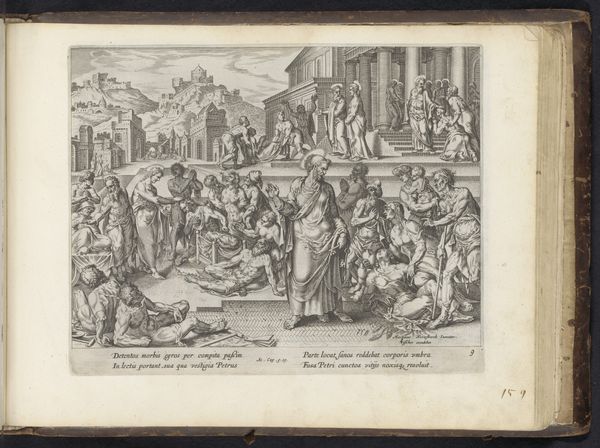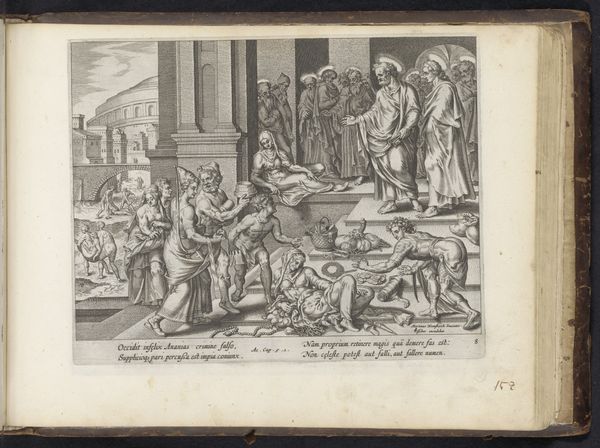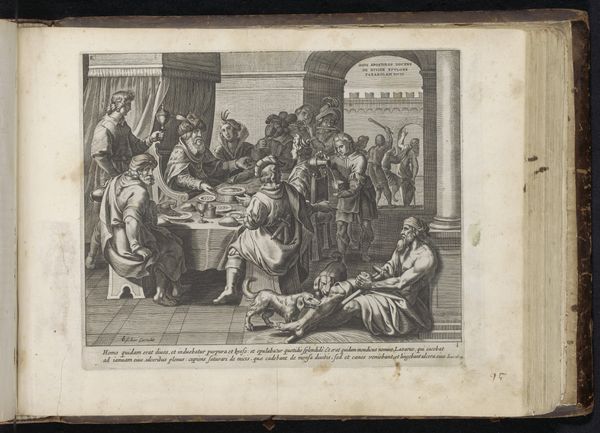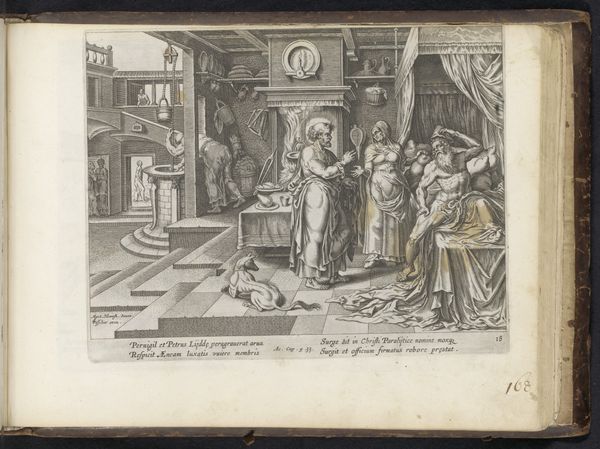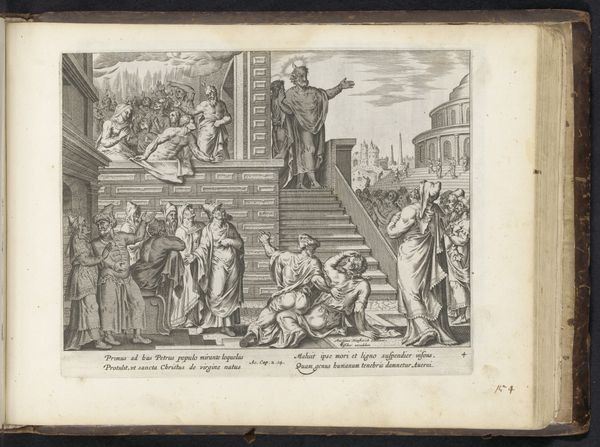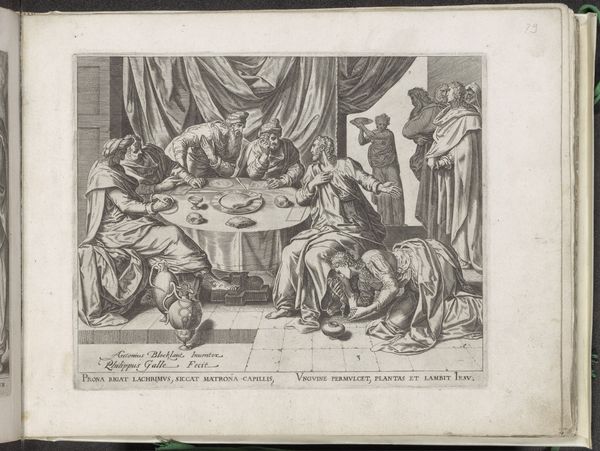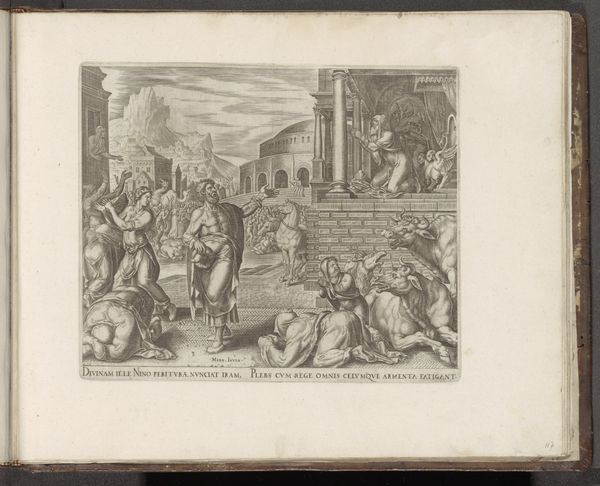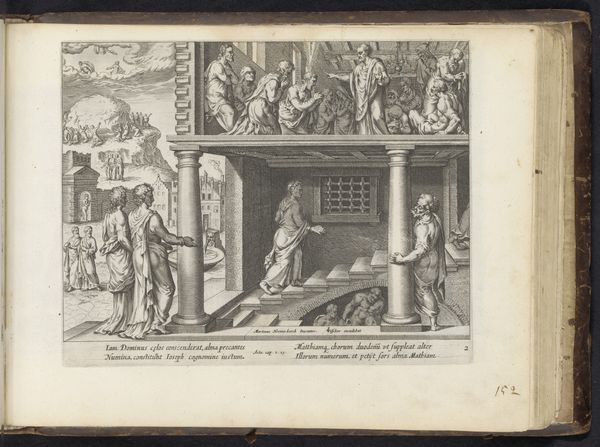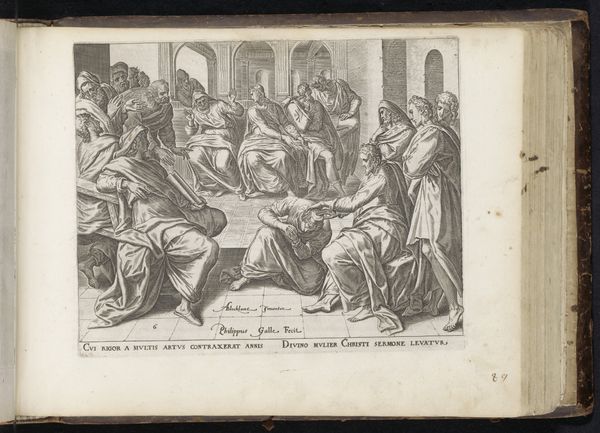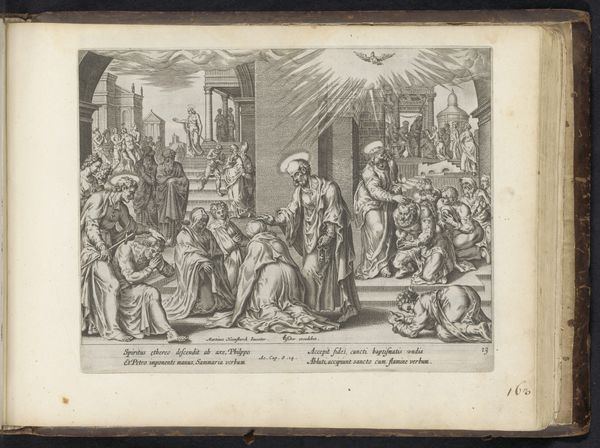
print, engraving
#
baroque
#
pen drawing
# print
#
figuration
#
line
#
history-painting
#
engraving
Dimensions: height 209 mm, width 263 mm
Copyright: Rijks Museum: Open Domain
Curator: This print, "Apostelen dopen nieuwe gelovigen in Jeruzalem," created between 1643 and 1646, really captures a historical moment rendered through line and engraving. It’s a busy scene, a lot happening within a small frame. Editor: It’s fascinating how detailed it is despite the size. It feels very theatrical, almost staged. What do you see when you look at this work? Curator: Well, from a materialist perspective, I’m immediately drawn to the labor involved in producing such a detailed engraving. Think about the craftsman, meticulously carving each line into the metal plate. This act of reproduction was crucial. It disseminated religious narratives on a relatively mass scale. How does the accessibility of prints like these reshape traditional notions about the artist and their craft? Editor: That's a great point. Before, painting might be exclusive to the wealthy or churches, but prints allowed wider access. So, are you saying the medium itself influenced the artwork's purpose? Curator: Precisely! The very act of engraving shifts the context. It isn’t simply about artistic expression, but about a new system of production. Consider the relationship between the engraver, the patron (likely a religious organization), and the intended consumer. This engraving serves a specific function in that network. Also, notice the architectural elements depicted. The way the buildings frame the religious events, for instance. Were they striving to associate this biblical story with wealth, power, and perhaps more earthly themes than piety alone? Editor: That’s not something I had thought of, the choice to show a temple. I wonder how someone from the working class at the time felt about such artwork? It really changes the way I look at Baroque art in general! Curator: Indeed, it invites a consideration of the intersection between artistry, industry, and societal influence within this context. By analyzing the material and social framework in which "Apostelen dopen nieuwe gelovigen in Jeruzalem" was made and consumed, we may understand art's deeper cultural significance and influence on shaping and propagating religious ideologies during the Baroque era. Editor: I have a whole new appreciation for considering the practical process that led to the work. Thanks for opening my eyes!
Comments
No comments
Be the first to comment and join the conversation on the ultimate creative platform.
